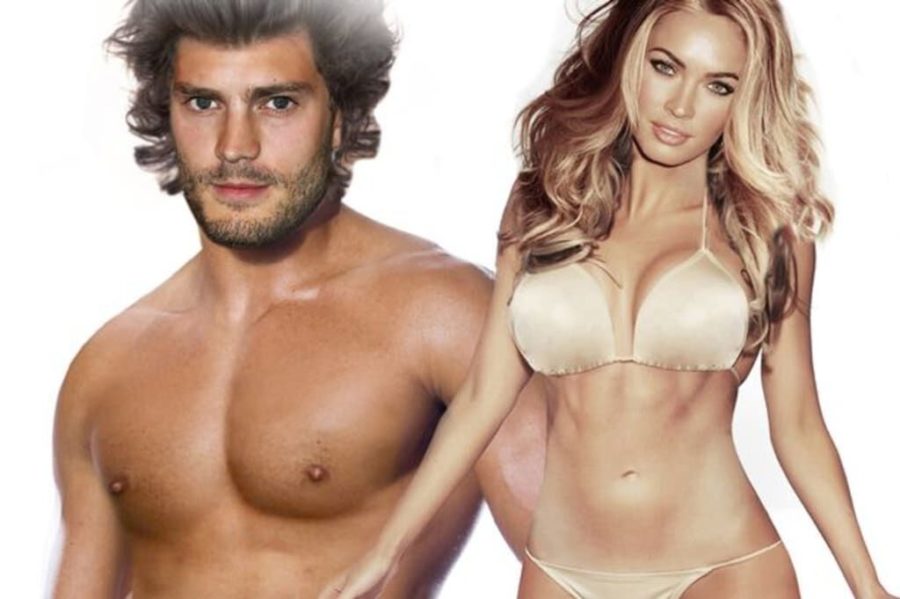American beauty ideals impact people of all sizes
September 14, 2020
Slender, curvy, skinny or proportionally plump. Each in different sizes, feet, inches or diameter are the human species. But who is the voice behind what America sees as a general standard of beauty?
A quick Google search of “American beauty standards” will reveal to you a white Barbie-esque woman and Ken doll-type man. This standard is an adaptation of the traditional Eurocentric style. However, these images’ harsh reality, produced by algorithms, exposes much more than unrealistic expectations.
These standards are primarily endorsed by corporations like Unilever plc, MacAndrews & Forbes, L Brands Inc. and L’Oréal, the parent companies of some of the biggest beauty brands like Revlon, Dove, Victoria’s Secret and an enormous bounty of beauty products like makeup, shapewear, clothes and serums.
Not everyone is quick to accept and appease this monetized system of judgment, however. The body positivity movement is a recent wave of women and men fighting the stigma produced by marketing and advertising business plans. Body positivity, however, is nothing new. It dates back as early as when feminism originated.
Amanda C. Arp, a graduate student in English, said she holds a unique perspective on American idealism. Arp and former colleagues have crafted several research programs in the last several years to examine the experiences of plus-sized undergraduate and graduate students of all genders at Iowa State University. Arp suggests interested parties examine the literature works of Janna L. Fikkan, Esther D. Rothblum, Susan Bordo, Judith Butler and more to better comprehend the historical background concerning fashion, film noir, politics and feminism.
“American beauty standards create a byproduct of body shaming because in some way most people in America don’t live up to the expectations for beauty and this is if you’re male or female, if you’re intersex, anywhere in between like there are specific standards,” Arp said.
Novotny Lawrence, associate professor at the Greenlee School of Journalism and Mass Communications teaches a unique course known as diversity in the media. This online course allows students to virtually engage and discuss various topics relating to the portrayals of ethnic groups, genders, sexual orientation and social classes. This course takes a closer look at its relationship in the media, in the news, advertising, information and entertainment while critically examining the effects of mass media on social issues and population groups.
“If you look at network television ABC, NBC, Fox, look at the shows and think about what the majority of people on those shows look like,” Lawrence said. “Everyone is generally conventionally attractive. There are still people that look certain ways [who] are privileged over others and this is certainly true in the case of ethnicity, but it’s also true just in terms of body type and what it means to be beautiful. So we have to break some of those barriers still.”
Michelle Roling, a certified eating disorder specialist and co-founder of the Eating Disorder Coalition of Iowa handles many student issues, most regularly pertaining to bulimia, anorexia and binge-eating disorder. Historically, the best known environmental contributor to eating disorders is the sociocultural idealization of thinness, according to the research project “What we have learned about the causes of eating disorders.”
College students are prone to alternative dieting methods such as fasting, self-induced vomiting, diet pills, laxatives, skipping meals, nicotine products to curb food cravings and more, which is often a gateway to eating disorders.
Beauty ideals extend beyond the test of time because, in our modern society, it’s just a click away. Meghan Shouse, a senior in apparel, merchandising and design and journalism and editor-in-chief of TREND magazine, is gearing up to challenge the testament of time with TREND’s upcoming issue, culture shock. The issue will touch on gender identity, race and the COVID-19 pandemic. American beauty ideals traverse beyond bodily expectations into various subjects, including fashion, which can be defined by different races, genders and preferences.
“Our editorial pieces in issue 28 and this current issue will cover racism in the fashion industry, how women’s fashion is portrayed in politics, how fashion has been affected by the pandemic, Black fashion designers and more,” Shouse said. “We couldn’t just ignore everything that’s going on right now when it affects us personally as well as the fashion industry.”







